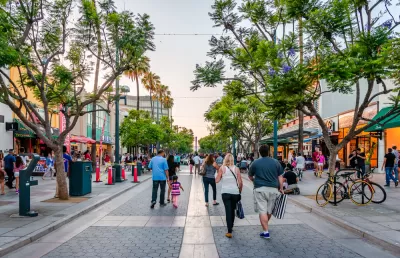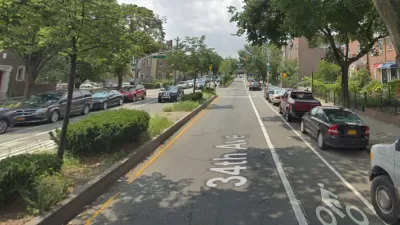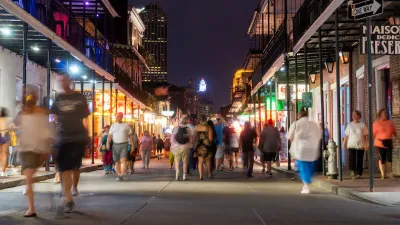The growth of pedestrianized spaces and car-free streets depends on a transformational shift in thinking about what—and who—public spaces and streets are for.

The fierce debate over how to use public space continues as cities weigh the future of the ‘open streets’ initiatives that gained popularity during the pandemic. Reis Thebault outlines the ongoing issue in The Washington Post.
Over the last year alone, major U.S. cities doubled-down on plans to restrict driving on main streets. Municipalities from Michigan to Washington, D.C., banned right turns at red lights. Voters earmarked billions for public transit projects. Officials unveiled hundreds of miles of new bike lanes. New York City proposed a new tax on motorists, and California relaxed jaywalking restrictions and freed up land once reserved for parking spaces.
These nationwide actions signal a shift in how we view public space, which has for decades been largely devoted to accommodating cars and driving. Change hasn’t come without controversy, but car-free streets are gaining widespread public support and momentum.
The article points to the heated fight over car access to San Francisco’s JFK Promenade (nee JFK Drive), a 1.5-mile stretch of road in Golden Gate Park. Last November, “More than 60 percent of voters approved a measure permanently banning cars from part of JFK Drive, while a similar number rejected a competing initiative that would have allowed cars to return to stretches of Golden Gate Park and the Great Highway, another popular city roadway that was partially closed at the onset of the pandemic.”
FULL STORY: Inside the movement to remake America’s city streets

Alabama: Trump Terminates Settlements for Black Communities Harmed By Raw Sewage
Trump deemed the landmark civil rights agreement “illegal DEI and environmental justice policy.”

Study: Maui’s Plan to Convert Vacation Rentals to Long-Term Housing Could Cause Nearly $1 Billion Economic Loss
The plan would reduce visitor accommodation by 25% resulting in 1,900 jobs lost.

Planetizen Federal Action Tracker
A weekly monitor of how Trump’s orders and actions are impacting planners and planning in America.

Waymo Gets Permission to Map SF’s Market Street
If allowed to operate on the traffic-restricted street, Waymo’s autonomous taxis would have a leg up over ride-hailing competitors — and counter the city’s efforts to grow bike and pedestrian on the thoroughfare.

Parklet Symposium Highlights the Success of Shared Spaces
Parklets got a boost during the Covid-19 pandemic, when the concept was translated to outdoor dining programs that offered restaurants a lifeline during the shutdown.

Federal Homelessness Agency Places Entire Staff on Leave
The U.S. Interagency Council on Homelessness is the only federal agency dedicated to preventing and ending homelessness.
Urban Design for Planners 1: Software Tools
This six-course series explores essential urban design concepts using open source software and equips planners with the tools they need to participate fully in the urban design process.
Planning for Universal Design
Learn the tools for implementing Universal Design in planning regulations.
Caltrans
Smith Gee Studio
Institute for Housing and Urban Development Studies (IHS)
City of Grandview
Harvard GSD Executive Education
Toledo-Lucas County Plan Commissions
Salt Lake City
NYU Wagner Graduate School of Public Service





























